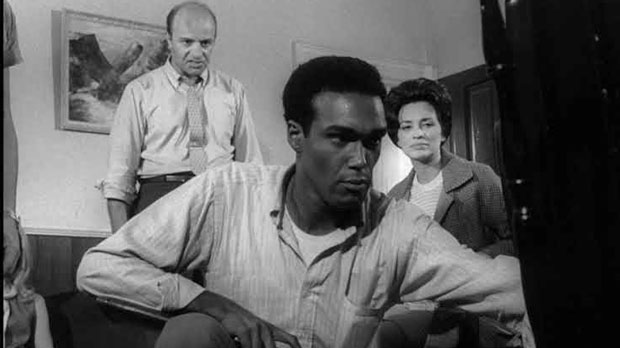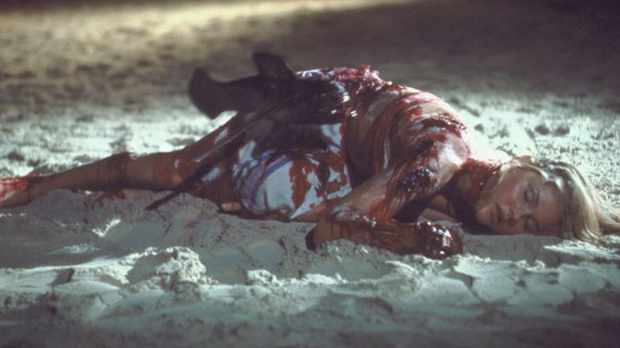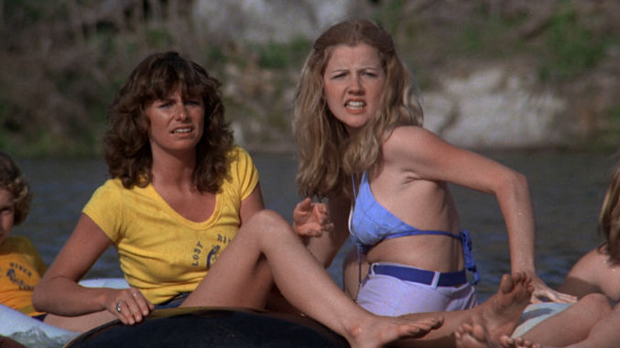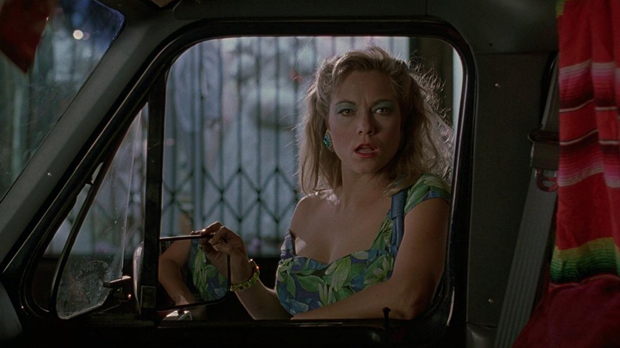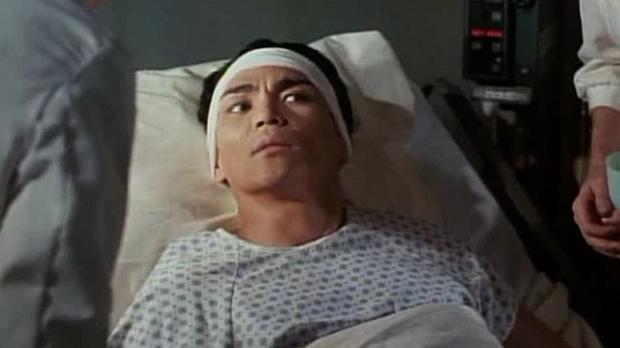 Night of the Living Dead (1968) The Walter Reade Organization/Horror RT: 96 minutes No MPAA rating (graphic violence, gruesome images, cannibalism, some language) Director: George A. Romero Screenplay: John Russo and George A. Romero Music: William Loose and Fred Steiner (stock recording) Cinematography: George A. Romero Release date: October 1, 1968 (US) Cast: Duane Jones, Judith O’Dea, Karl Hardman, Marilyn Eastman, Keith Wayne, Judith Ridley, Kyra Schon, Bill Hinzman, Russell Streiner, Charles Craig, George Kosana. Box Office: $12-$15M (US)/$30M (World)
Night of the Living Dead (1968) The Walter Reade Organization/Horror RT: 96 minutes No MPAA rating (graphic violence, gruesome images, cannibalism, some language) Director: George A. Romero Screenplay: John Russo and George A. Romero Music: William Loose and Fred Steiner (stock recording) Cinematography: George A. Romero Release date: October 1, 1968 (US) Cast: Duane Jones, Judith O’Dea, Karl Hardman, Marilyn Eastman, Keith Wayne, Judith Ridley, Kyra Schon, Bill Hinzman, Russell Streiner, Charles Craig, George Kosana. Box Office: $12-$15M (US)/$30M (World)
Rating: ****
Prior to George A. Romero’s groundbreaking horror film Night of the Living Dead, zombies were ghouls of a different type. Typically, in movies like White Zombie (1932) and I Walked with a Zombie (1943), they were living beings under the influence of voodoo witch doctors. With Night of the Living Dead, Romero transformed them into reanimated flesh-eating cannibals thereby revolutionizing the horror genre. From then on, horror movies were never quite the same.
Made on a minuscule budget of $114,000, Night of the Living Dead is a DIY (Do It Yourself) project. He and a couple of friends found investors, raised money and shot it themselves on 35mm black-and-white film in rural Butler County, PA (outside Pittsburgh). When they finally had a completed film in 1968, Romero literally threw the cans in the trunk of his car and drove straight to New York City in search of a theater willing to screen it that very night.
Night of the Living Dead was one of the last films released before the new MPAA ratings system went into effect. This meant that theater owners weren’t legally obligated to deny admittance to children. If only they knew what was in the film. As was the norm for horror movies at the time, it was shown as a Saturday afternoon matinee feature. Parents dropped off their kids figuring it was just another silly horror movie with a crazy title. They had no idea the horrors their children were about to witness- i.e. violence, cannibalism and walking dead people. They were understandably outraged when they returned two hours later to find their kids crying or puking outside the theater. Naturally, shocked theater owners revised their admission policy once they actually viewed the movie.
The story begins in a quiet rural cemetery where Barbara (O’Dea) and her brother Johnny (Streiner) are visiting their father’s grave. Johnny good-naturedly teases his sister about how scared she was of this place as a child.
Johnny: “They’re coming to get you, Barbara!”
Barbara: “Stop it! You’re ignorant!”
Johnny: “They’re coming for you, Barbara!”
Barbara: “Stop it! You’re acting like a child!”
As they go to leave, a strange-looking old man (Hinzman) walking through the cemetery suddenly attacks Barbara. Johnny is killed when he tries to protect his sister. Barbara flees the scene on foot and ends up at a farmhouse where she finds the owner’s mangled corpse lying at the top of the stairs. A few moments later, a black man named Ben (Jones) arrives on the scene and barricades them inside the house as it becomes surrounded by “ghouls” (as they’re known here). He boards up the doors and windows as Barbara descends into a catatonic state.
They’re not alone in the house. A man named Harry (Hardman) emerges from the basement. He’s been down there the whole time with his wife Helen (Eastman) and injured daughter Karen (Schon) who was bitten by one of the ghouls. There’s a young couple, Tom (Wayne) and Judy (Ridley), hiding down there as well. Harry insists that the basement is the safest place to take refuge from the attacking creatures while Ben says they should stay upstairs where they can escape if necessary. If they want to make it through the night alive, they’re going to have to work together.
Since Night of the Living Dead is more than 50 years old, it’s a safe bet everybody and their brother has seen it by now so I’m not going to worry about spoilers. NOBODY survives the night. All the major characters die by the end, but the one death that sticks with most people in Ben’s. As the hero of the story, he’s expected to make it out alive especially after all he’s been through. Nope! Mistaking him for a ghoul, a member of the posse hunting and killing ghouls shots him in the head (the only way to kill one of the ghouls). It’s a harsh ending, but it’s the only one that makes sense. Romero himself said that he couldn’t imagine a happy ending. His refusal to change it cost him distribution deals with major studios so he released it independently. I’m glad he stuck to his guns. Night of the Living Dead is, after all, about a zombie apocalypse. There are no happy endings in an apocalypse.
With the recent passing of Mr. Romero, I revisited the original Dead trilogy starting, of course, with Night of the Living Dead, rightfully regarded as a classic of the horror genre. It’s amazing what can be accomplished with a small budget and a crew of amateurs. It’s Romero’s first feature film and one of the strongest debuts I’ve ever seen. It’s also one of the first horror movies to feature graphic violence and gore (aside from Herschell Gordon Lewis’ splatter flicks, of course). Romero used Bosco chocolate syrup to simulate blood and roasted ham for flesh in the “chomp, chomp” scenes. It sure looks freaky real in a black-and-white flick. The makeup effects are also terrific. Since there wasn’t enough money in the budget for elaborate decaying effects, only the recently deceased come back to life.
The storyline is simply great! Seven people trapped in a house by cannibalistic zombies, the idea alone gives me the heebie-jeebies. I love how Romero completely changed our perception of zombies (a term never used in the movie). To me, a zombie is a slow-moving reanimated corpse that feeds on the flesh of the living. When somebody gets bitten by a zombie, they become one. Zombies can only be killed by destroying the brain either by gunshot or bludgeoning. They’re afraid of fire. All of this came from Romero’s imagination. All I can say is “Cool!”
The acting is fairly good for a low-budget horror flick. Night of the Living Dead is one of the first films to feature a black hero in an all-white cast. Jones does an amazing job as Ben. Originally, the character was supposed to be an uneducated truck driver. Jones, then an unknown stage actor, rewrote it to reflect how he felt the character should be portrayed. As an educated black man, he felt Ben should exhibit the same values. O’Dea is also good as Barbara, but there’s always been debate (especially among feminists) about her character being portrayed as a frightened, helpless girl. I argue that in times of crisis, everybody reacts differently. Barbara was terrified. Moreover, she saw her brother killed. Wouldn’t you be traumatized if that happened to you? The rest of the performances are passable for the most part even though some of the line readings are a bit stiff.
The score in Night of the Living Dead isn’t entirely original. Much of it was borrowed from the low-budget 1959 sci-fi flick Teenagers from Outer Space. Stock music from The Hideous Sun Demon (1959) is also used. Romero makes great use of sound in several scenes, namely when Karen kills her mother with a garden trowel after transforming into a ghoul. Eastman’s screams are looped in over shots of the child repeatedly stabbing her mom. That still freaks me out. In the end, Night of the Living Dead plays like a nightmare. It ends with a series of still shots of ghouls’ corpses being piled up and set on fire. Ben’s body is among them.
There’s a reason why Night of the Living Dead is still remembered. It’s legitimately scary. It really is like a nightmare. I can see why the kiddie matinee audiences were so freaked out. Some will argue that it’s tame by today’s standards and while that may be true to some extent, it doesn’t diminish the movie’s power to frighten. Romero’s movie really struck a nerve with viewers. Some see it as a critique of America in the 60s with its Cold War politics, racism and our involvement in the Vietnam War. I’ll agree that Night of the Living Dead is pretty subversive. It’s definitely nihilistic. However one chooses to interpret it, there’s no arguing that it’s a damn good scary movie. Isn’t that what really matters?
